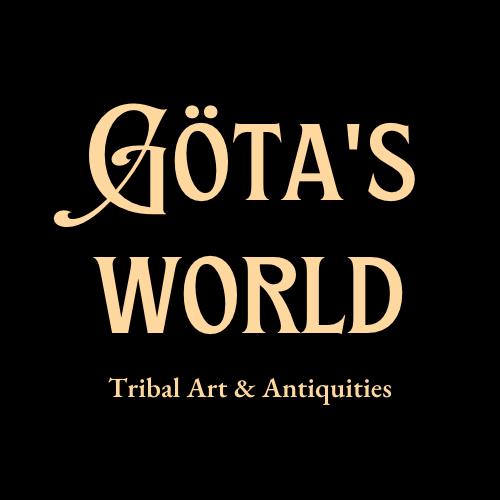Early Harappan Terracotta Bull Figurine
Early Harappan Terracotta Bull Figurine
Couldn't load pickup availability
Early Harappan Civilization, Kot Diji Phase, c. 2800–2600 BC, Sindh, Pakistan
A rare and charming terracotta figurine of a humped bull (Bos indicus), dating to the Kot Diji phase of the Early Harappan period. Hand-modeled in light red clay with a grey core, this stylized bull is instantly recognizable by its exaggerated hump, rounded muzzle, and short legs. The figure is minimally detailed—no eyes, just softly formed ears and tail—yet full of character. One foreleg is broken, and the extremities are worn from age and use, adding to its authenticity.
Likely intended as a child’s toy, this piece also reflects the symbolic importance of the zebu bull in Harappan society. Similar figurines—sometimes pierced for suspension—are among the earliest artistic expressions found at Harappa, serving either as playthings, votive offerings, or amulets.
Compact, tactile, and deeply evocative, this piece offers a direct connection to daily life in one of the world’s first great urban civilizations. A rare survivor of the ancient Indus Valley, full of historical charm and timeless simplicity.
Good condition. Light surface wear and abrasions commensurate with age, nicks and chip. Encrusted earthen deposits throughout. Size approx. 6,3cm x 5,5cm x 3,2cm.
Provenance: From the estate of Professor Tore Arnborg (1912–2007), a senior United Nations official who served as head of the FAO in West and East Pakistan (now Bangladesh). Acquired abroad and brought to Sweden in the 1960s.
For a similar examples see:
Hump-Backed Bull, The Los Angeles County Museum of Art, Accession Number: AC1992.214.29 (https://collections.lacma.org/node/173747)
Figure, The British Museum, Accession Number: 1939,0619.215 (https://www.britishmuseum.org/collection/object/A_1939-0619-215?selectedImageId=1613329277)
References and further reading:
The Pakistani Collection of Terracotta Figurines in the British Museum, Irfanullah, Fazal Sher and Amjad Pervaiz, Hazara University Mansehra, Pakistan Heritage 9, 2017.
Ancient Cities of the Indus Valley Civilization, Jonathan Mark Kenoyer, Oxford University Press, 1998.
Indian Art in the Ashmolean Museum, J. C. Harle and Andrew Topsfield, Oxford: Ashmolean Museum, 1987, no. 6 on p. 6, illus. p. 6.
Early Indian art at the Ashmolean Museum - Catalogue in progress, Ahuja Naman, 2016, n. 29.1




-
Shipping
The shipment will be prepared in the course of 3-5 days and dispatched via Posti Group Oyj or purchased item(s) can be picked up from our shop during the store's opening hours (Tarkk’ampujankatu 4, 00140, Helsinki, Finland). Within the Finland, all items are shipped via Posti Group Oyj unless otherwise requested. We pack the items carefully and mainly in recycled materials because we want to save nature. You will receive the tracking number for your items by e-mail.
-
Returns
Returns and exchange will be accepted within fourteen days (14) of receipt at the purchaser’s cost to include freight and packaging. Items must be returned in the same condition as when they were shipped, and will not be accepted if damaged or altered in any way. Please inform us via email (info@gotanmaailma.fi) or by calling +358408408352 before sending. We do not accept returns more than 14 days after delivery.




